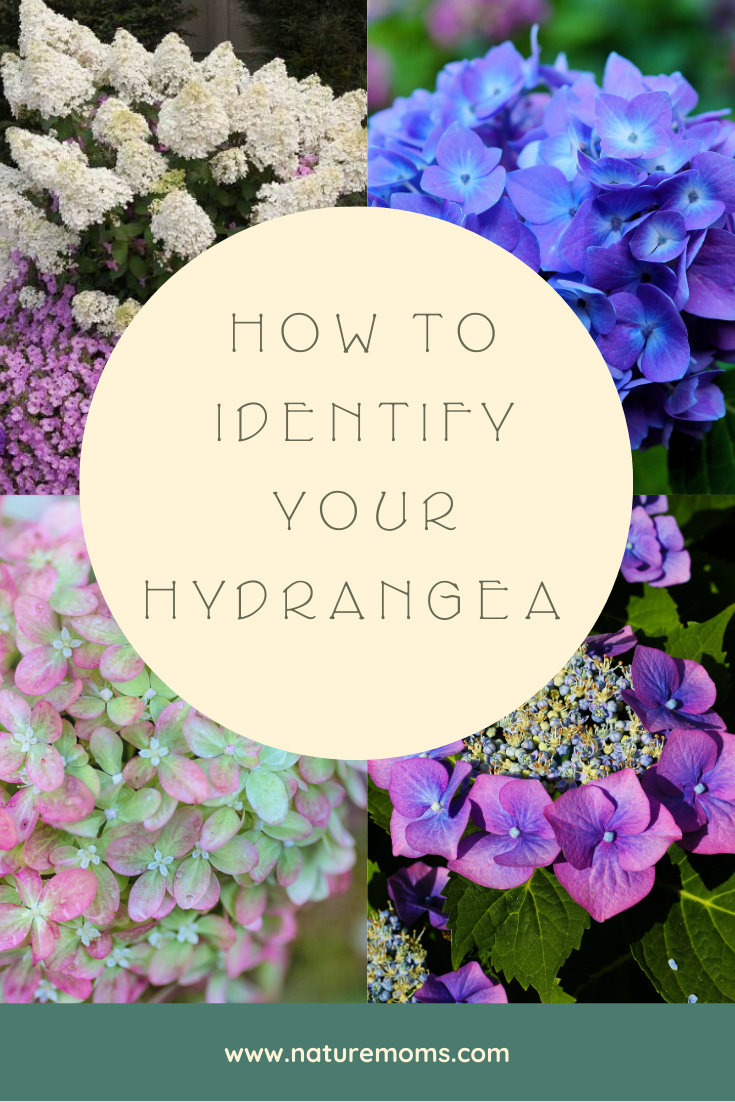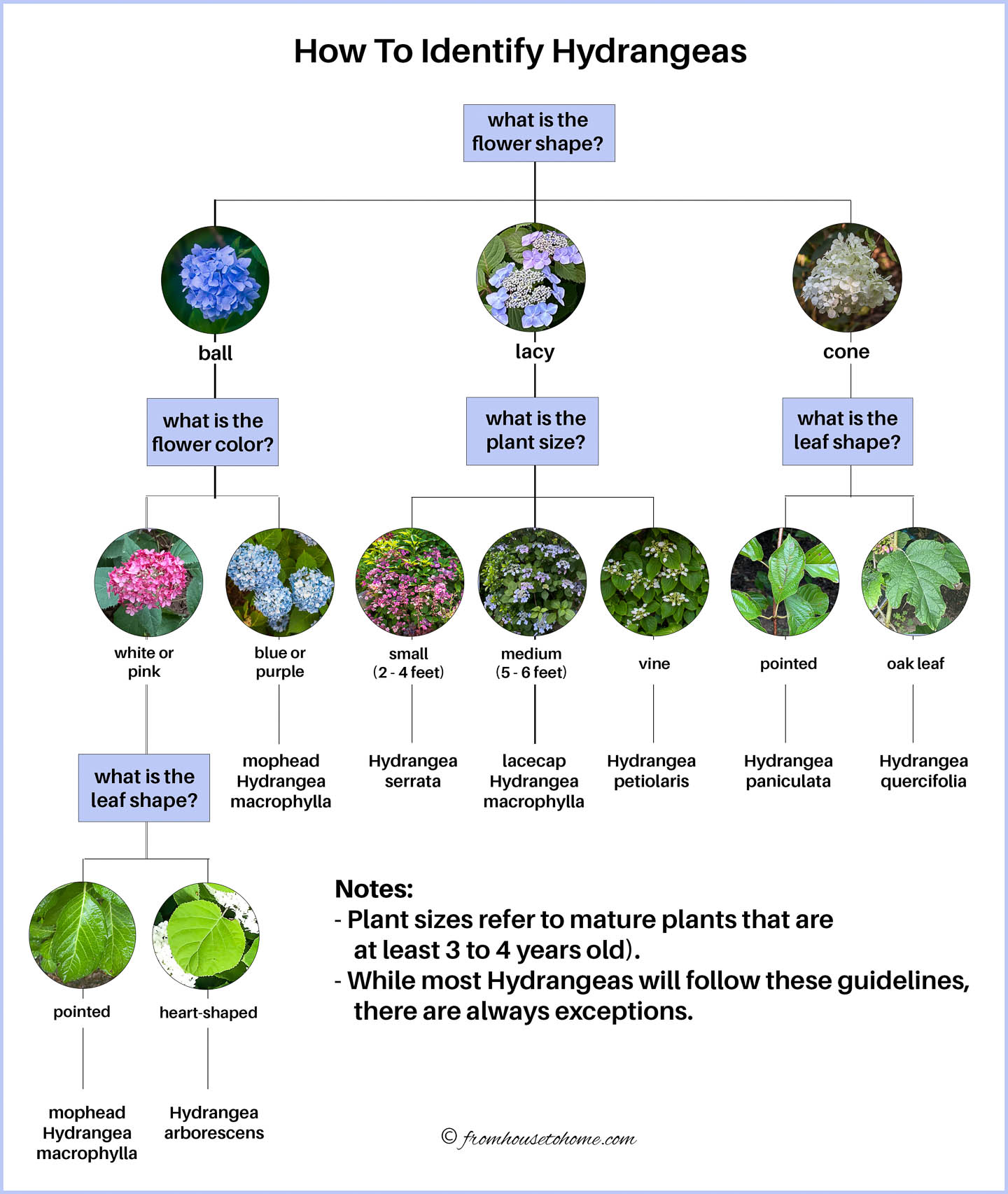To identify hydrangeas, examine the leaf shape and flower structure. Look for clusters of blooms and varying colors based on soil pH.
Hydrangeas are popular garden plants known for their stunning flower displays. These flowering shrubs can grow in various climates, making them a favorite among gardeners. Understanding how to identify hydrangeas can enhance your gardening experience. They often feature large, round flower heads that can be pink, blue, or white, depending on the soil’s acidity.

Credit: empressofdirt.net
The leaves are typically broad and green, providing a lush backdrop to the vibrant blooms. By recognizing specific traits, you can easily differentiate hydrangeas from other plants in your garden. This knowledge can help you care for them effectively and appreciate their beauty throughout the seasons.
How to Identify Hydrangea Varieties: A Quick Guide
Introduction To Hydrangeas
Hydrangeas are popular garden shrubs known for their beautiful blooms. They come in various colors like blue, pink, and white. These colors depend on the soil’s pH level. Gardeners love them for their large flower clusters and lush foliage.
Many species exist, making hydrangeas a diverse choice. Some common types include:
| Species | Characteristics |
|---|---|
| Hydrangea macrophylla | Large round blooms, prefers partial shade. |
| Hydrangea paniculata | Conical flower heads, thrives in full sun. |
| Hydrangea quercifolia | Oak-shaped leaves, unique peeling bark. |
Understanding their diversity helps in choosing the right type for your garden.
Hydrangea Color Spectrum
Hydrangeas display a beautiful color spectrum. Their colors can change based on soil pH. Acidic soil usually produces blue blooms. Alkaline soil often results in pink flowers. Neutral soil can yield purple shades. Each color variation adds charm to gardens.
| Soil pH | Color |
|---|---|
| Acidic | Blue |
| Neutral | Purple |
| Alkaline | Pink |
Common color variations can include white and green. White blooms stay white, regardless of soil. Green hydrangeas add a unique touch to gardens. Understanding these colors helps with garden planning. Choose the right plants for your space.
Leaf Shape And Texture
Identifying hydrangeas involves studying their leaf shape and texture. There are two main types: deciduous and evergreen. Deciduous hydrangeas lose their leaves in autumn. Their leaves are often broad and flat. Evergreen hydrangeas keep their leaves all year round. Their leaves may be thinner and waxy.
To identify hydrangeas through foliage, observe the color and size of the leaves. Deciduous leaves can be vibrant green or yellow. Evergreen leaves usually appear dark green or glossy. Pay attention to the leaf edges too; some may be smooth while others are serrated.
Flower Head Forms
Hydrangeas have different flower head forms. The two main types are mophead and lacecap. Mophead varieties look like big, round balls of flowers. Lacecap types have flat centers with small florets around them.
Panicled hydrangeas have cone-shaped flower heads. Their blooms are usually white or pink. Smooth hydrangeas have rounded clusters of flowers that can be white or blue.
| Type | Description |
|---|---|
| Mophead | Round, ball-like clusters of flowers |
| Lacecap | Flat centers with small flowers around |
| Panicled | Cone-shaped blooms, often white or pink |
| Smooth | Rounded clusters, can be white or blue |
Seasonal Blooming Patterns
Hydrangeas are known for their stunning blooms in spring and summer. Different varieties have unique blooming patterns. Some types bloom only once a year, while others may bloom multiple times.
Remontant varieties, or repeat-bloomers, produce flowers in both spring and summer. These plants are ideal for those who want continuous color. The flowers can change color based on soil pH. Acidic soil produces blue flowers, while alkaline soil creates pink blooms.
Proper care is essential for maximizing blooming. Regular watering and pruning can help. Ensure they receive plenty of sunlight for best results.
Size And Growth Habit
Dwarf hydrangeas are small and compact. They grow well in small spaces. These plants usually reach 1 to 3 feet tall. Their flowers can be pink, blue, or white. Dwarf varieties are perfect for borders or containers.
Climbing hydrangeas are unique. They can grow up to 30 feet tall. These plants climb on walls and fences. They have beautiful, heart-shaped leaves and white flowers. Climbing hydrangeas need support to grow properly.
Tree hydrangeas can become quite large. They often reach heights of 6 to 10 feet. Their branches are sturdy and can hold big flower heads. These hydrangeas work well as focal points in gardens.
Bark And Stem Characteristics
The stem color of hydrangeas can vary. Common colors include green, brown, and red. Each color gives clues about the plant’s health. Healthy stems are usually firm and vibrant.
The texture of the stem is also important. Young stems often feel smooth. Older stems may have a rougher feel. This change indicates the plant’s growth stages.
Bark peeling patterns can help in identifying hydrangeas. Some types have thin, peeling bark that reveals a new layer underneath. This feature can be quite attractive and adds to the plant’s charm.
Observing these details helps in recognizing different hydrangea varieties. A keen eye makes gardening more enjoyable.

Credit: naturemoms.com
Caring For Different Hydrangeas
Hydrangeas need proper care to thrive. They love moist soil but dislike being waterlogged. Water them regularly, especially in hot weather. Morning sun is ideal. Too much afternoon sun can harm them.
Pruning helps keep hydrangeas healthy. The best time to prune depends on the type. For bigleaf hydrangeas, prune after blooming. For panicle hydrangeas, prune in late winter. Always remove dead or damaged stems.
| Hydrangea Type | Watering | Pruning Time |
|---|---|---|
| Bigleaf | Moist soil | After blooming |
| Panicle | Regularly | Late winter |
Using Hydrangeas In Landscaping
Hydrangeas add beauty and color to any landscape. They come in various sizes and colors. Design considerations include their sunlight and water needs. Choose a spot with partial shade for best results. These plants thrive in rich, well-drained soil.
Companion plants work well with hydrangeas to enhance the garden. Consider hostas, which provide lush foliage. Ferns add a soft touch, creating a calming atmosphere. Daylilies bloom beautifully alongside hydrangeas, adding vibrant colors.
| Companion Plants | Benefits |
|---|---|
| Hostas | Provide lush foliage and contrast |
| Ferns | Create a soft, calming atmosphere |
| Daylilies | Add vibrant colors and blooms |

Credit: www.gardenersoasis.com
Frequently Asked Questions
How Can I Tell Different Hydrangea Types Apart?
To identify different hydrangea types, observe leaf shape, flower color, and growth habit. For example, Mophead hydrangeas have large, round flowers, while Lacecap varieties feature flatter blooms. Additionally, consider the season and environment, as some types bloom at different times and thrive in various conditions.
What Are Common Hydrangea Flower Colors?
Hydrangea flowers commonly come in blue, pink, white, and purple. The color often depends on soil pH. Acidic soil typically yields blue flowers, while alkaline soil produces pink ones. White varieties remain consistent, while some types may change color based on environmental factors.
When Do Hydrangeas Typically Bloom?
Hydrangeas usually bloom from late spring to early fall. The exact blooming period varies by species. For instance, Macrophylla types can bloom from June to September. Knowing your hydrangea type helps predict its blooming time and care requirements.
How Can I Care For Hydrangeas?
Caring for hydrangeas involves regular watering, proper pruning, and suitable sunlight. Ensure they receive about an inch of water weekly, especially during dry spells. Prune at the right time based on the species to encourage healthy growth. Additionally, provide them with morning sunlight and afternoon shade.
Conclusion
Identifying hydrangeas can enhance your gardening experience. Focus on their leaf shape, flower type, and growth habits. By observing these features, you’ll easily distinguish between varieties. Embrace the beauty of these plants in your landscape. With practice, identifying hydrangeas will become second nature, enriching your appreciation for these stunning blooms.
